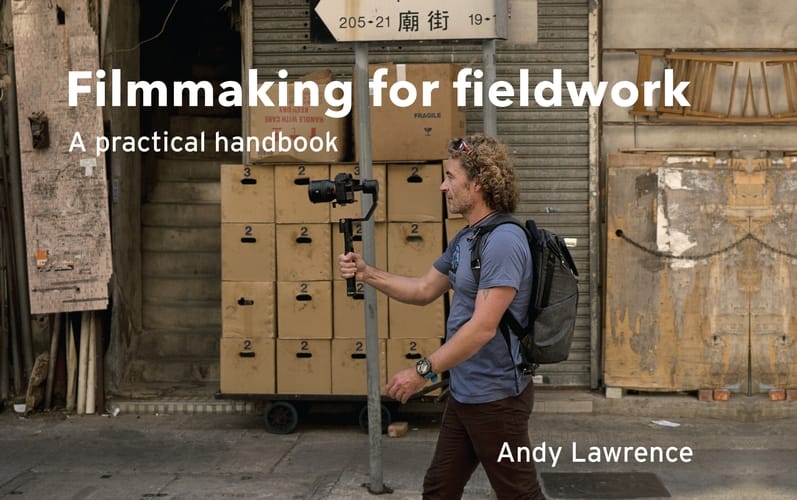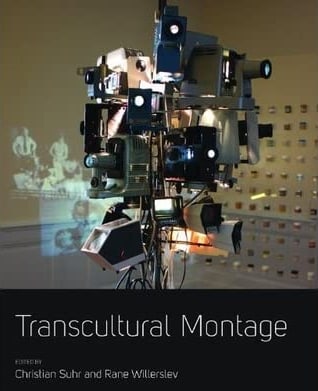Watch these video lectures
These video lectures correspond to the seminar class sessions. It is imperative that you watch the respective video lectures before the seminar sessions, so you can fully engage in the discussion and understand the steps you must make in this transition period from data compilation to data analysis.
Module 1: Selection Process
- This video lecture reflects our thinking and the program from 2018. While a bit dated now, it still serves as a basis for the process ahead. Koen and Mark will elaborate and depart from this in Seminar 1, where we’ll make more reference to the Select Reel Process.
- Note that the most relevant materials are in the first 10 minutes.
- From 10:22 we explain the Loglist used by Laura Ogden, which we already introduced to you in the Field Preparations workshop in December. While redundant, it may give you a chance to consider the process from the other end of the field work phase.
- From 17:14 we describe an older version of Assignment 1 (1-hour pre-selection), which can be disregarded.
- Before the first seminar, reflect on your logging and assembly process till now. Making some general notes on how you would evaluate your materials overall on these four criteria:
- Ethnographic Content
- Anthropological Analysis
- Cinematic Quality
- Affective Engagement
Module 2: Sequencing
Module 3: Editing and/as Analysis
Module 4: Editing Theories
Module 5: Theory and/as Practice
Module 6a: Output
Module 6b: Output/Planning
Module 6c: Post-Production & Distribution
Read these texts
We have provided you with some useful readings that will help you conceptualize the next phase of your research and give you some key references. These readings should be completed at your own pace and do not adhere to particular class sessions. While there are no due dates with this reading and you have flexibility when you complete it, be aware that you are expected to engage these readings in your thesis, so neglecting them completely is not an option. Furthermore, we strongly feel that reading some of these articles during the process of editing and analysis will inspire you to think differently about this new stage in making your film, if not also in your writing.
Whereas Andy Lawrence’s book will help you think about montage as a way of ordering your footage into a coherent narrative, most of the articles in Transcultural Montage focus on thinking deeper and more creatively about the post-production process. Although not required, we draw heavily on the process of editing outlined in Jacob Bricca’s practical handbook on documentary editing (see recommended).

Read at least the following selections:
- “Introduction, Montage as an Amplifier of Invisibility” (p.1-15)
- “Montage as an Analytic” (p.17-19)
- Nielsen, Morten “Temporal Aesthetics, On Deleuzian Montage in Anthropology” (pp. 40-57)
- Irving, Andrew “Into the Gloaming: A Montage of the Senses” (pp. 76-96)
- Irving, Andrew “Montage in Writing” (pp. 97-99)
- Dalsgaard, Anne Line “Being a Montage” (pp. 100-105)
- Salamon, Karen Lisa “Mind the Gap” (pp. 145-158)
- Salamon, Karen Lisa “Montage in Film” (pp. 159-162)
- Hogel, Jakob Kirstein “Montage as Analysis in Ethnography and Documentary Filmmaking” (pp. 213–225)
- Grimshaw, Anna “In Defense of Observational Cinema” (pp. 226-240)
- Grimshaw, Anna “Montage in Museum Exhibitions” (pp.241-261)
- Empson, Rebecca “Assembling Bodies: Cuts, Clusters, and Juxtapositions” (pp. 262-277)
- Marcus, George “Afterword. The Traffic in Montage, Then and Now” (pp. 302-307)

Recommended readings
Barbash, Ilisa, and Lucien Taylor
1997 “Postproduction” & “Distribution” In Cross-Cultural Filmmaking: A Handbook for Making Documentary and Ethnographic Films and Videos. Berkeley: University of California Press.
Borgdorff, Henk
2012 “The Production of Knowledge in Artistic Research.” (Chapter 3) In The Conflict of the Faculties: Perspectives on Artistic Research and Academia. Leiden University Press. Link ➙
Bricca, Jacob
2017 Documentary Editing: Principles & Practice. 1st edition. New York: Routledge.
Köhn, Steffen
2014 “Screening Transnational Spaces. Anthropology’s spatial paradigms and the construction of cinematic space in ethnographic film”. Anthrovision 2.2. Link ➙
MacDougall, David
1995 “Subtitling Ethnographic Films: Archetypes into Individualities.” Visual Anthropology Review 11, no. 1: 83–91.
MacDougall, David
“Voice and Vision” In The Corporeal Image (p. 32-64).
Morphy, Howard
1994 “The Interpretation of Ritual: Reflections from Film on Anthropological Practice.” Man 29, no. 1 (March 1994): 117-146.
Murch, Walter
2001 In the Blink of an Eye: A Perspective on Film Editing. Los Angeles: Silman-James Press.
Pasolini, Pier Paolo
1980 “Observations on the Long Take”. October, 13 (Summer 1980), 3-6.
Ruby, Jay
2000 “Toward an Anthropological Cinema, Some conclusions and a possible Future.” In Picturing Culture: Explorations of Film and Anthropology, 151–80. Chicago: University of Chicago Press.
Stout, Noelle
2014 “Bootlegged: Unauthorized Circulation and the Dilemmas of Collaboration in the Digital Age: Bootlegged.” Visual Anthropology Review 30 (2): 177–87.
Westmoreland, Mark R.
2005 “Rubbed the Wrong Way: Making Ethnographic Film Against the Grain.” Kroeber Anthropological Society Papers 91: 59–82. Link ➙
Zhang, Jinghong
2012 “The Interaction between Visual and Written Ethnography in Subtitling.” Visual Anthropology 25, no. 5 (October 1, 2012): 439–49.
